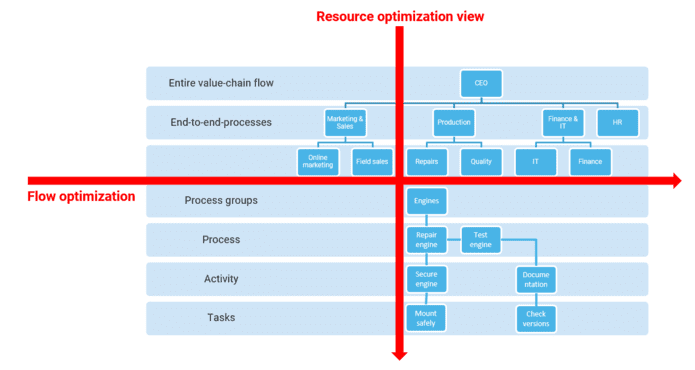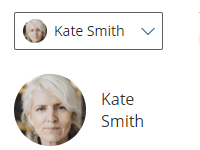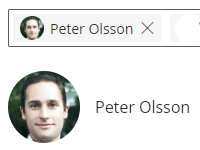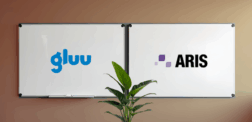
How a process owner role can strengthen your customer experience

Most managers and employees think in reporting lines and departments. However, great customer experiences are created across the company. This article is about why and how a formal and empowered process owner role may help your company to become more customer focused.
Not what you’re looking for? Explore these related articles:
Who owns the flow?
Marketing brings in leads, account executives close them and then account managers take over. Once a customer signs up then “production” give them what they paid for. Finally, the service or support function takes over. This resembles many companies’ value chains and customer experiences. Such a flow will span a number of departments and often even more roles. The challenge is that each department does their part while optimising for efficiency. So, when everybody focuses on their own area of responsibility then who looks after the customer? Too often, no one does. This is where a formal ‘process owner‘ role work as the Gluu in those end-to-end processes that underpin your customer experience. In this article you’ll learn…
- Why a process owner supplements your normal hierarchy.
- How a process owner is different from a functional manager.
- What a process owner’s job description could look like.
- Who makes the ideal process owner candidate and how much of their time they should allocate to this role.
Let’s first take a look at why the process owner can create value.
Why a process owner supplements your normal org chart
The lean philosophy focuses on how organization’s create value – as perceived by their customers – using the least resources possible. This makes sense both from an economic and from an environment point of view.
The challenge is that our normal hierachical way of organizing our teams and budgets stand in the way of this. Senior management delegates work through the hierarchy to frontline employees. As anyone doing reporting and filling urgent requests may attest this is not necessarily improving your customer experience. Our organization’s hiearchy focuses on optimizing internal resources, not on ensuring that the customer’s order flows as fast as possible to delivery.
This is why we need a horizontal view of our company. A view that is closer to the customer experience. The illustration below shows how the two perspectives are related:

A new view is needed to uncover the blind spots
By looking at the company from a different perspective a process owner role can help to uncover blind spots that the hierarchical organization misses. Here are a few examples:
- People asked for specific information at an event – and then they weren’t passed on as lead to sales. This meant lost sales.
- Customers who were interested in a new product weren’t passed on to sales. More lost sales.
- Insights from service delivery weren’t passed on to product development and incorporated in new versions. Worse customer reviews meant more lost sales.
- Order handling captured information that was not used in production. This was a waste of time.
How is a process owner different from a functional manager?
Here is a summary of the differences between functional managers and process owners. Notice how the two role types supplement each other:
| Functional Manager | Process owner | |
| Management | Manages direct reports function or department. | Indirectly manages the people that have the roles that are part of the process. |
| Knowledge | A functional specialist who shares knowledge within their function. | A generalist who understands the customer’s needs well and shares knowledge about the process. |
| Improvements | Within the function or department. E.g. via a daily or weekly meeting in front of a whiteboard. | Across functions. E.g. via regular process improvement meetings. |
To ensure process owners have the right tools to manage and optimize end-to-end processes effectively, check out our BPM Software Selection Guide for insights on selecting the best platforms.
Another way of looking at the process owner’s role
To help understand why process owners (and processes, of course) are needed then think of a larger organization like a subway system. The stations are the functional areas such as Sales, Procurement, etc. where the bulk of the day-to-day activity is. The subway lines are what customers use to go from A to B and get value from your organization. If station (that is functional) managers plan their own schedules, staffing and maintenance, then the train service gets disrupted. This means that passengers get annoyed and shift to other means of transportation.

If you have no processes – and process owners to manage them – then your company works more like a network of stations without common planning and scheduling. This is why the process owner role can be critical.
“Process owners can travel your organization as the customer’s representatives and help to uncover and remove those bottlenecks that slow down the flow.”
It sounds like quite a job, right? Yes, it will be challenging if done right. This means appointing the right people and giving them a proper mandate. Below is a good mandate in the form of a job description:
An example of a process owner’s job description
(This is normally used in medium-sized companies from 200-2.000 people)
Process owner responsibilities
- Ensures that the process aligns with the company’s strategy.
- Learns about best practices elsewhere and develops and improves the process continuously.
- Monitors process performance.
- Communicates the process and its activities to the people that have roles in it (and to their functional managers).
Process owner objectives
- Process performance: That the process delivers the intended outcomes.
- Process documentation: That related process diagrams and work instructions always reflect current work practice.
The required capabilities of a process owner
- An excellent understanding of your target customer.
- A generalist, rather than a specialist.
- Able to use process improvement tools such as process mapping, DMAIC, A3 and 5S.
- Good communication and interpersonal skills.
What does the ideal process owner candidate look like?
With this profile in mind who should then get the job? Ideally, you should find an internal process owner candidate with the following characteristics:
- Has worked in more functions in your industry.
This makes it easier to have a real cross-functional perspective. - Has worked in more companies.
This helps ensure that he/she is open to finding best practices from elsewhere and avoid the Not Invented Here syndrome. - Is an informal leader.
He or she has a lot of ideas and is respected as an informal leader. This may be a chance to reward this.
Ideally, the candidate can devote 50% of his/her work hours to the role as process owner. The 50% can be further split into 35% on process improvement by facilitating and communicating the process to the people who have roles in the process. The last 15% is for documenting and optimizing the common work instructions and connections to systems.
👉 Recommendation: To enhance your company’s focus on customer experience and streamline your operations, consider implementing a formal and empowered process owner role within your organization.
This role can help bridge the gap between departments and uncover blind spots, ensuring that your processes align with your customers’ needs and expectations. However, it’s crucial to select the right individual for this role and provide them with the necessary mandate and resources to drive process improvements effectively. Remember that embracing this approach may lead to conflicts with traditional hierarchical structures, but the benefits in terms of customer satisfaction and efficiency can be significant.
Example Gluu features for helping process owners
Gluu is a BPM tool designed for placing process owners at the center of process governance. This allows for effective delegation without loosing control. Here are two sample features:

Activity-level edit rights
Assign owners and sub-editors to specific activities to distribute responsibility within teams.

Process-specific edit rights
Manage user edit rights globally or per process to control who can view, change or approve content.
A final word of caution
If your process owners do their jobs well then you’ll see the processes becoming more visible and transparent. This may cause conflict with functional managers and may lead to other blind spots – just think about the joke about the drunken Irishman looking for his wallet under a streetlight and complaining that he can’t find it. “So where did you lose it?” asks a passerby, and the Irishman points far away. “So why are you looking here then?” queries the Samaritan, to which the Irishman replies, “Because it’s the only place where there’s light”.
Frequently Asked Questions
A process owner is responsible for overseeing an end-to-end process that spans multiple departments, ensuring its efficiency and alignment with customer needs. Unlike a functional manager who focuses on a specific department’s tasks, a process owner takes a holistic approach, optimizing the entire process.
An ideal process owner should have a deep understanding of the target customer, be a generalist rather than a specialist, possess process improvement skills, and excel in communication and interpersonal skills. Ideally, they should allocate approximately 50% of their work hours to the role, with 35% dedicated to process improvement and 15% for documentation and optimization of work instructions.
Embracing a customer-focused perspective is vital because it helps uncover blind spots that traditional hierarchical structures may miss. This perspective ensures that processes flow smoothly to deliver value to customers, rather than optimizing internal resources.
This article was first published on April 4, 2016 and updated on September 26, 2022.



